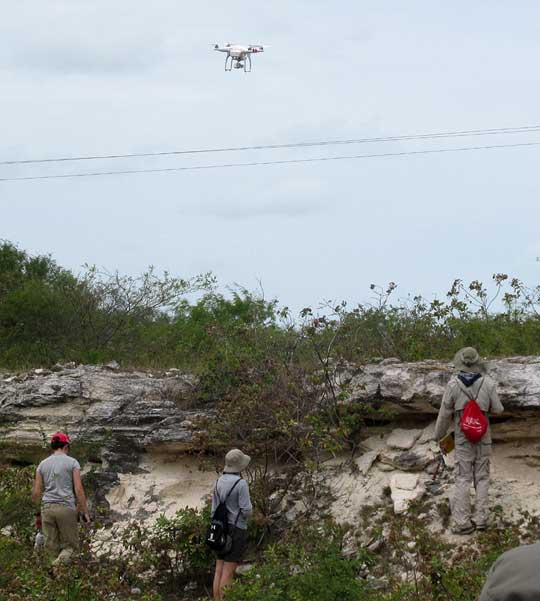Excerpts from Jim Conrad's
Naturalist Newsletter
from the April 5, 2015 Newsletter issued from Río Lagartos, on the Yucatan Peninsula's northern coast (~N21.60°, ~W88.16°), Yucatán state, MÉXICO
GEOLOGY STUDENTS IN A BARROW PIT
Last weekend a group of geology students and teachers from Northwestern University near Chicago passed through, studying our karst geology developed on geologically very young limestone. At their first stop they analyzed bedding at a borrow pit just south of town where years ago material was taken to enlarge Río Lagartos's peninsula by filling in the estuary and mangroves, and to elevate roads built through the swamps. Below, you can see students examining exposed strata in the pit:

The teachers found a great deal to say about this and other of the pit's walls. How did certain hard-surfaced tunnels and empty spaces develop in the formation? Why were certain strata harder than others, and what accounted for some layers being thin and others thick? Why were some layers crooked or wavy, and why at a certain depth did layers suddenly stop being horizontally aligned, but instead deeply tilted? Why did some strata bear larger fossil shells than others? Which way was the current flowing that deposited the layers? Were the layers deposited in shallow or deep water, and how far from shore? How would we determine the age of the strata?
When the students fanned out to different rock faces looking for evidence with which they could formulate and defend theories suggesting answers to these questions, they were accompanied by the object seen hovering over them below:

A close-up of the camera-toting drone with its whirring blades and blinking red and green lights is shown below:
